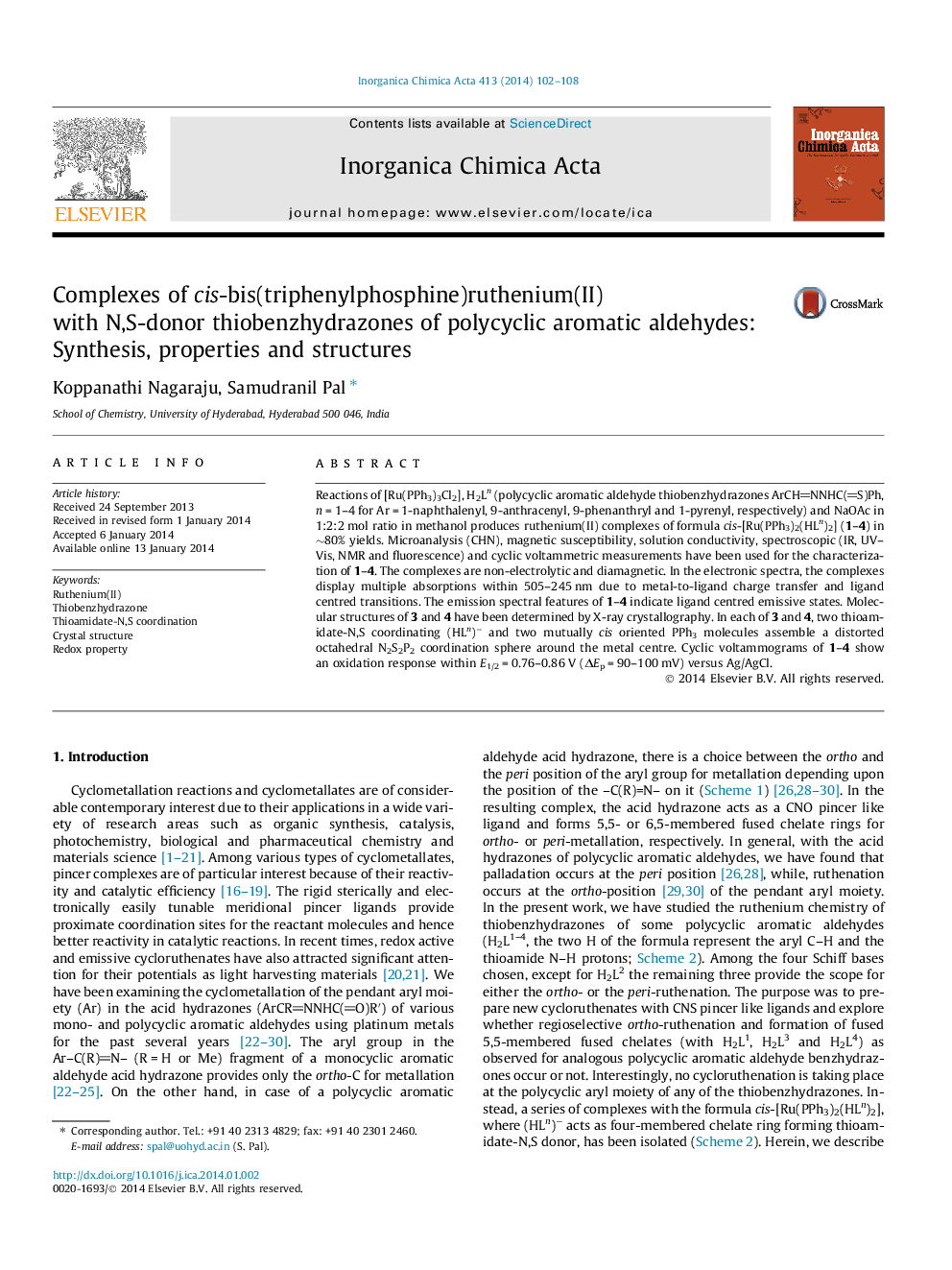| Article ID | Journal | Published Year | Pages | File Type |
|---|---|---|---|---|
| 1312222 | Inorganica Chimica Acta | 2014 | 7 Pages |
•Ruthenium chemistry with polycyclic aromatic aldehyde thiobenzhydrazones (H2Ln) was examined.•Reactions of [Ru(PPh3)3Cl2], H2Ln and NaOAc (in 1:2:2 mol ratio) provided cis-[Ru(PPh3)2(HLn)2].•The complexes were characterized by microanalysis, spectroscopic and electrochemical studies.•The complexes are emissive and redox active.•X-ray structures showed 4-membered chelate ring forming thioamidate-N,S coordination of (HLn)−.
Reactions of [Ru(PPh3)3Cl2], H2Ln (polycyclic aromatic aldehyde thiobenzhydrazones ArCHNNHC(S)Ph, n = 1–4 for Ar = 1-naphthalenyl, 9-anthracenyl, 9-phenanthryl and 1-pyrenyl, respectively) and NaOAc in 1:2:2 mol ratio in methanol produces ruthenium(II) complexes of formula cis-[Ru(PPh3)2(HLn)2] (1–4) in ∼80% yields. Microanalysis (CHN), magnetic susceptibility, solution conductivity, spectroscopic (IR, UV–Vis, NMR and fluorescence) and cyclic voltammetric measurements have been used for the characterization of 1–4. The complexes are non-electrolytic and diamagnetic. In the electronic spectra, the complexes display multiple absorptions within 505–245 nm due to metal-to-ligand charge transfer and ligand centred transitions. The emission spectral features of 1–4 indicate ligand centred emissive states. Molecular structures of 3 and 4 have been determined by X-ray crystallography. In each of 3 and 4, two thioamidate-N,S coordinating (HLn)− and two mutually cis oriented PPh3 molecules assemble a distorted octahedral N2S2P2 coordination sphere around the metal centre. Cyclic voltammograms of 1–4 show an oxidation response within E1/2 = 0.76–0.86 V (ΔEp = 90–100 mV) versus Ag/AgCl.
Graphical abstractA series of cis-{Ru(PPh3)2}2+ complexes with polycyclic aromatic aldehyde thiobenzhydrazones are reported. Molecular structures of the diamagnetic and redox active complexes are determined by spectroscopic and X-ray crystallographic measurements. The thioamidate-N,S coordination mode of thiobenzhydrazonate keeps the fused aromatic ring away from the metal centre and impedes its cycloruthenation.Figure optionsDownload full-size imageDownload as PowerPoint slide
